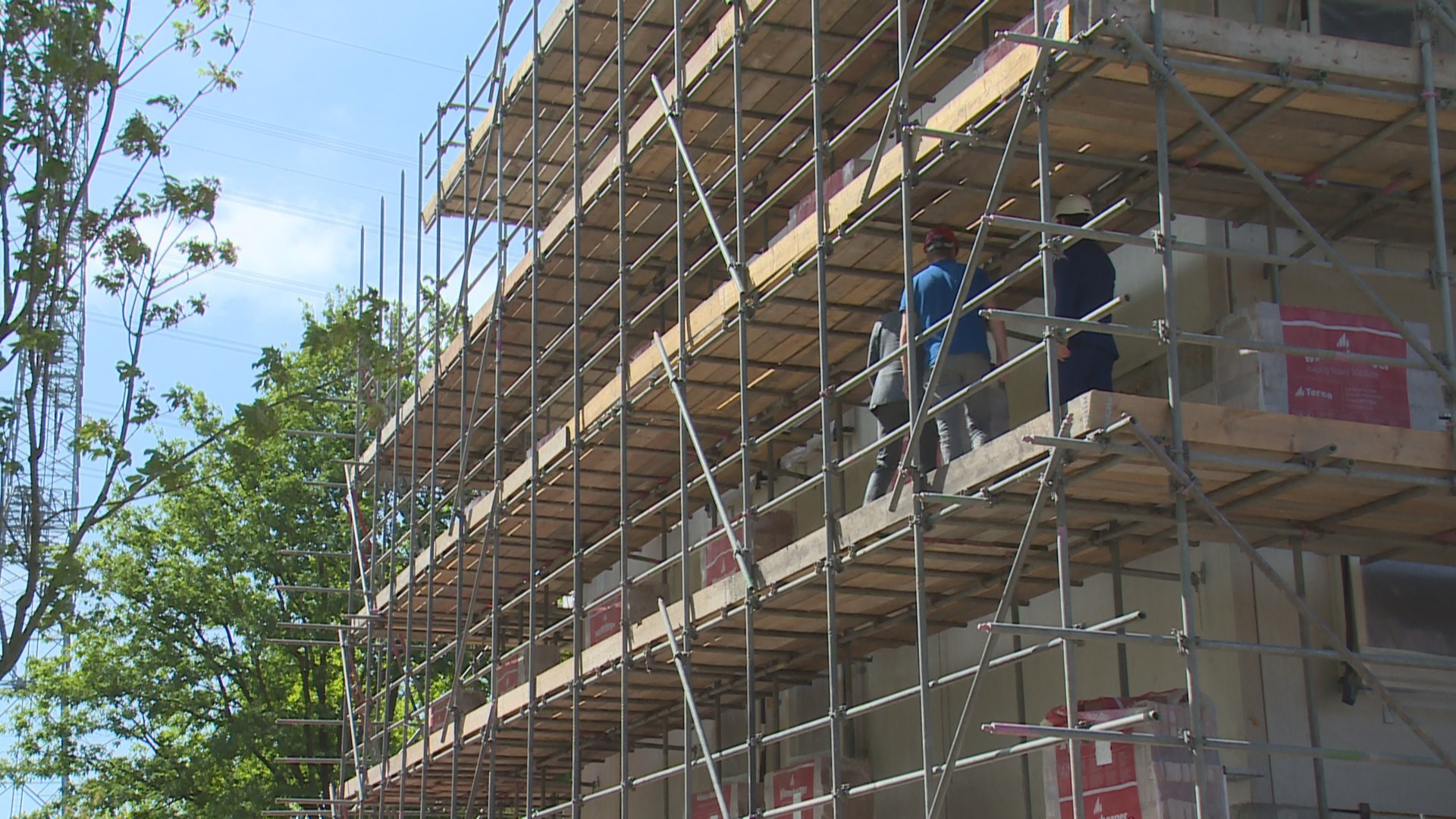
Tientallen Duizenden Nieuwe Woningen te Dicht bij Drukke Wegen: Schadelijke Uitlaatgassen Risico voor Bewoners Tilburg – In Tilburg worden tientallen duizenden nieuwe woningen gepland nabij drukke verkeerswegen. Dit roept zorgen op bij experts en omwonenden, omdat deze woningen blootgesteld zullen staan aan hoge concentraties luchtvervuiling, met name uitlaatgassen. Gezondheidsrisico’s Onderzoek heeft aangetoond dat blootstelling aan uitlaatgassen kan leiden tot een aantal ernstige gezondheidsproblemen, zoals: * Chronische luchtwegaandoeningen (astma, bronchitis) * Hart- en vaatziekten * Kanker Vooral kinderen en ouderen zijn kwetsbaar voor de schadelijke gevolgen van luchtvervuiling. Normoverschrijdingen Volgens metingen overschrijden de concentraties fijnstof en stikstofdioxide in de buurt van drukke wegen in Tilburg de vastgestelde veiligheidsnormen. De nieuwe woningen zullen waarschijnlijk nog dichter bij deze wegen worden gebouwd, wat leidt tot nog hogere blootstellingsniveaus. Zorgen van Bewoners Bewoners in de getroffen gebieden zijn bezorgd over de impact van de luchtvervuiling op hun gezondheid. Zij vrezen dat de gemeente hun gezondheid opoffert voor economische groei. Verantwoordelijkheid van de Gemeente De gemeente Tilburg heeft de verantwoordelijkheid om de gezondheid van haar inwoners te beschermen, inclusief degenen die in de buurt van drukke wegen wonen. Experts roepen de gemeente op om: * Strengere emissienormen vast te stellen voor voertuigen * Te investeren in openbaar vervoer en andere duurzame vervoersopties * Groenbuffers te creëren tussen wegen en woonwijken Urgente Actie Vereist Tientallen duizenden mensen staan op het punt om inwonend te worden in gebieden met gevaarlijke luchtvervuiling. De gemeente Tilburg moet onmiddellijk actie ondernemen om de gezondheid van haar inwoners te beschermen. Het is van cruciaal belang om het aantal nieuwe woningen nabij drukke wegen te beperken en effectieve maatregelen te nemen om de luchtvervuiling aan te pakken.The HTML code you provided contains the markup for a news article. The article is about a study that found that air pollution is responsible for a significant number of strokes and heart attacks in the Netherlands. The markup includes the article’s title, introduction, author, date and time of publication, update time, source, and sharing options. The article body is hidden behind a paywall, and there is a fixed slot for advertising at the bottom of the page.The HTML code you provided contains the markup for a news article. The article is about a study that found that air pollution is responsible for a significant number of strokes and heart attacks in the Netherlands. The markup includes the article’s title, introduction, author, date and time of publication, update time, source, and sharing options. The article body is hidden behind a paywall, and there is a fixed slot for advertising at the bottom of the page. Here is a summary of the markup: * The `
` element with the class `article__intro` contains the article’s title and introduction. * The `header` element with the class `article__header` contains the article’s title, author, and date and time of publication. * The `
` element with the class `article__source` contains the article’s source. * The `
` element with the class `article__update` contains the article’s update time. * The `
` element with the class `article__credit` contains the article’s source. * The “ element with the `itemprop` attribute `datePublished` contains the article’s publication date. * The “ element with the `content` attribute containing a URL is a link to the article’s image. * The “ element with the `content` attribute containing a number is the width of the article’s image. * The “ element with the `content` attribute containing a number is the height of the article’s image. * The “ element with the `content` attribute containing a string is the name of the article’s publication. * The “ element with the class `article__body` contains the article’s body. * The “ element with the class `article-login-gate` contains a paywall. * The `
` element with the class `article-login-gate__title` contains the paywall’s title. * The `
` element with the class `article-login-gate__info` contains the paywall’s information. * The `
` element with the class `article-login-gate__buttonholder` contains the paywall’s button. * The “ element with the class `article__footer` contains the article’s footer.Tienduizenden nieuwe woningen te dicht bij drukke weg: schadelijke uitlaatgassen risico voor bewoners Tilburg – In Tilburg worden momenteel tienduizenden nieuwe woningen gebouwd, waarvan een groot aantal vlak langs drukke wegen. Dit roept zorgen op over de luchtkwaliteit en de gezondheidsrisico’s voor toekomstige bewoners. Uit onderzoek blijkt dat uitlaatgassen van auto’s schadelijke stoffen bevatten, zoals stikstofdioxide en fijnstof. Deze stoffen kunnen longproblemen, hart- en vaatziekten en zelfs kanker veroorzaken. Volgens experts is de concentratie van uitlaatgassen binnen 50 meter van een drukke weg het hoogst. In sommige delen van Tilburg worden echter nieuwe woningen gebouwd op nog kleinere afstanden van drukke verkeersaders. Bewoners van deze woningen lopen een verhoogd risico op gezondheidsproblemen. Kinderen en ouderen zijn hierbij het meest kwetsbaar. De gemeente Tilburg erkent het probleem en zegt maatregelen te nemen om de luchtkwaliteit te verbeteren. Zo worden er bomen en beplanting aangeplant om uitlaatgassen op te vangen. Ook wordt er geïnvesteerd in openbaar vervoer en elektrisch rijden. Experts benadrukken echter dat deze maatregelen onvoldoende zijn om de gezondheidsrisico’s volledig weg te nemen. Zij roepen de gemeente op om nieuwe woningen verder weg van drukke wegen te bouwen en om de verkeersintensiteit op deze wegen te verminderen. Totdat er effectieve maatregelen zijn genomen, adviseren experts toekomstige bewoners om te overwegen of ze wel willen wonen in de buurt van een drukke weg.